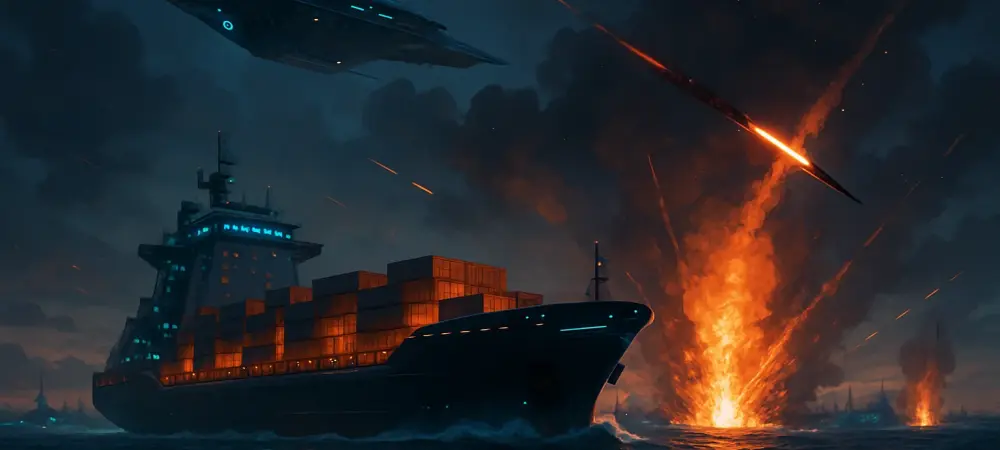Uncharted Waters: Setting the Stage for Marine Insurance Challenges
Picture a global trade network thrown into disarray, with shipping routes disrupted by conflict and insurers scrambling to cover escalating risks while battling shrinking margins. This is the stark reality facing the marine insurance market in 2025, where a soft pricing cycle collides with geopolitical volatility in regions like the Red Sea and Ukraine. The stakes are high as this sector, a linchpin of international commerce, grapples with excess capacity, rising claims, and the specter of catastrophic war-related losses. This market analysis aims to dissect these pressing dynamics, shedding light on why understanding current trends and future projections is critical for stakeholders. By delving into data-driven insights and industry patterns, the goal is to equip insurers, businesses, and policymakers with a clear view of the challenges and opportunities shaping marine insurance today.
Deep Dive into Market Dynamics: Trends, Data, and Projections
Persistent Soft Cycle: A Drag on Profitability
The marine insurance market remains entrenched in a soft cycle, particularly within the hull segment, where competitive pressures and excess capacity continue to suppress rates. Despite a modest uptick in global hull premiums, the growth falls short of matching the escalating exposures tied to fleet values, which have risen significantly. Industry observers note that many carriers are expanding their capacity to secure larger accounts, a strategy that further erodes pricing discipline. This trend poses a significant risk of returning to the unprofitable conditions seen in prior decades, undermining financial stability. Without a shift toward more disciplined underwriting, the sector could face prolonged challenges in balancing revenue against mounting liabilities.
Geopolitical Volatility: War Risks Redefining Coverage
Conflict zones such as the Red Sea and Ukraine have become central to the marine insurance narrative, drastically altering shipping patterns and spiking demand for war risk coverage. Vessel traffic in high-risk areas has plummeted, with ships rerouting along longer, more expensive paths, thereby increasing both operational costs and insurance exposures. War risk underwriting, traditionally a niche with small premiums but severe potential losses, now occupies a critical space as rates rise to reflect heightened danger. However, the market is split—some insurers see opportunity in these elevated premiums, while others shy away from the unpredictable volatility. This divergence highlights the high-stakes nature of navigating geopolitical disruptions in today’s trade landscape.
Claims Surge and Inflation: Mounting Financial Pressures
Beyond market softness and war risks, the industry faces a steep rise in claims severity, driven by incidents like fires and cargo damage, which rank among the costliest losses. Inflation exacerbates this burden, pushing up repair and replacement costs at a time when fleet values continue to grow, amplifying overall exposure. Projections for the combined ratio—a key measure of underwriting profitability—suggest a worrying deterioration, potentially hovering between 100-105% in the near term. This financial strain underscores the urgent need for rate adjustments and innovative claims management strategies. Insurers must adapt swiftly to these economic realities to avoid deeper losses in an already pressured market.
Trade Fragmentation: Reshaping Risk Profiles
Global trade is undergoing a profound transformation, with nearshoring, tariffs, and geopolitical shocks fragmenting traditional supply chains. New trade corridors are emerging, driven by shifts in energy sourcing and national interests, which complicate the risk landscape for marine insurers. Regulatory efforts targeting shadow fleets—often aging vessels transporting sanctioned cargo with questionable coverage—add another layer of complexity, as stricter oversight aims to curb environmental and security risks. These changes demand agile risk assessment models that can account for dynamic trade routes and compliance requirements. Insurers who fail to pivot may find themselves exposed to unforeseen liabilities in this evolving environment.
Competitive Shifts: The Role of Managing General Agents
The competitive landscape of marine insurance is being reshaped by the growing influence of managing general agents (MGAs), particularly in the cargo segment. These entities target niche markets, offering specialized coverage that traditional carriers may overlook, thus attracting capacity from larger players. However, the rapid proliferation of MGAs risks oversaturating the market, potentially driving down rates and margins if differentiation is not prioritized. This trend reflects a broader push for innovation within the sector, as competition fosters new approaches to underwriting. Yet, it also serves as a cautionary tale about the perils of unchecked expansion in an already soft market.
Technological and Environmental Frontiers: Emerging Opportunities
Looking ahead, technology presents a promising avenue for marine insurance, with tools like artificial intelligence and predictive modeling enhancing risk assessment capabilities. These advancements could enable more precise underwriting, helping to mitigate some of the financial pressures from rising claims. Simultaneously, the energy transition introduces new risks and opportunities, as decarbonization efforts and alternative fuels reshape shipping practices. Insurers must develop coverage models that address these green technologies while navigating the uncertainties they bring. Embracing such innovations will be crucial for staying competitive in a market poised for transformation over the coming years, from 2025 to 2027.
Reflecting on the Market: Key Takeaways and Strategic Paths Forward
Looking back on this analysis, the marine insurance sector confronts a confluence of challenges in 2025, from a persistent soft pricing cycle to the disruptive impacts of geopolitical conflicts and rising claims costs. The interplay of trade fragmentation and competitive shifts driven by managing general agents adds further complexity to an already turbulent landscape. These findings point to a market at a critical juncture, where financial stability hinges on strategic adaptation. For stakeholders, the path forward involves embracing disciplined underwriting to counter soft market pressures and leveraging technology to enhance risk management. Insurers are encouraged to explore flexible war risk coverage options to address geopolitical volatility, while businesses reliant on marine insurance need to prioritize partnerships with carriers offering tailored solutions. As regulatory and environmental demands grow, aligning with transparency initiatives becomes essential to mitigate systemic risks. Ultimately, the journey ahead requires a blend of innovation and vigilance, ensuring that the sector can weather ongoing storms while seizing emerging opportunities.

